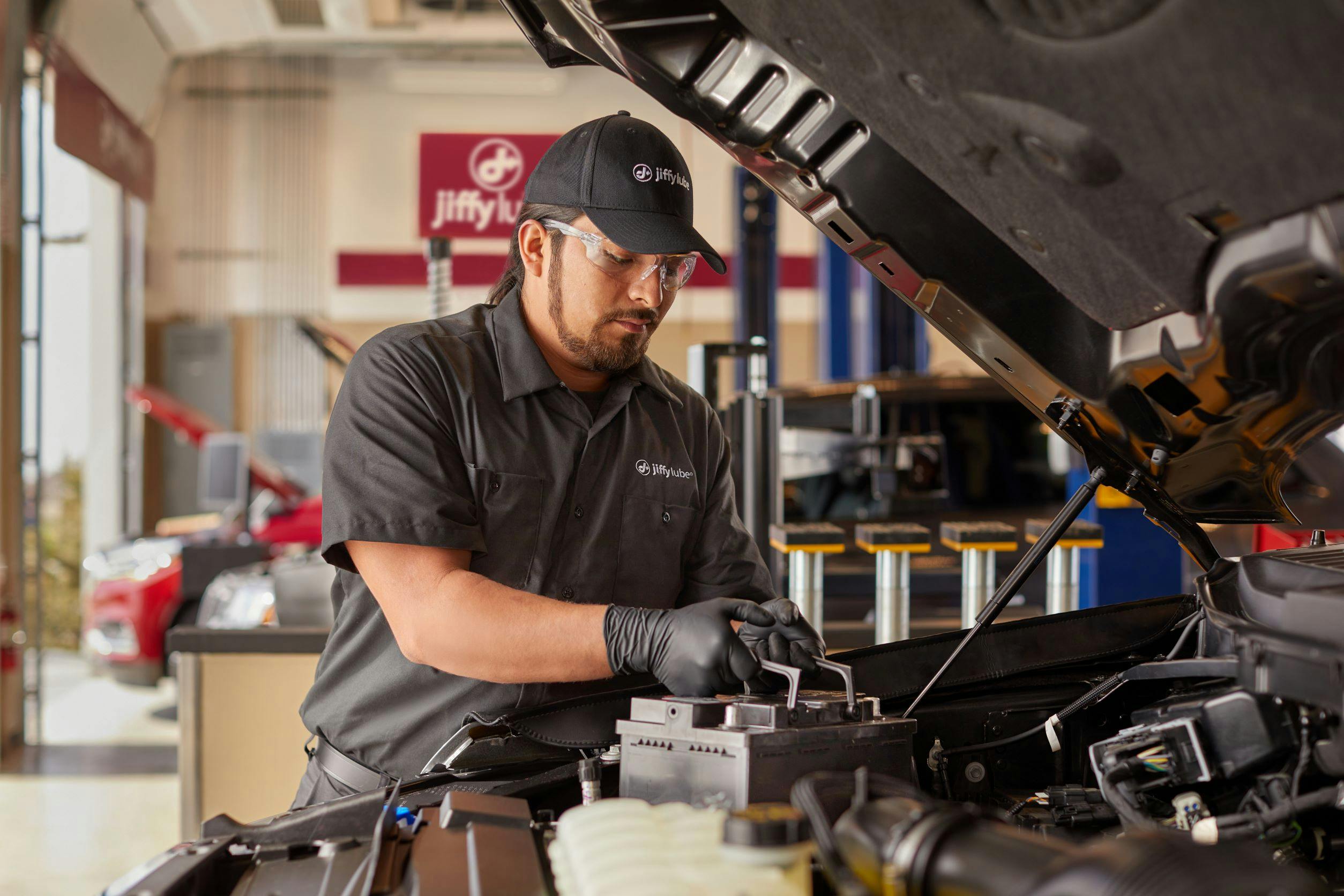Like most drivers, you probably spend more time thinking about road trip playlists than you do about your car’s battery. But when the battery light on car turns on, you need to know how to respond. Here, we’ll answer the most common questions about batteries, including what to do if you see the battery light on.
WHAT IS THE PURPOSE OF A BATTERY LIGHT ON CAR?
Your battery light, also called the dashboard battery indicator, is designed to let you know about an issue with your vehicle’s battery or charging system. It could indicate that your battery is damaged or worn out, or that the charging system is malfunctioning in some way. When your vehicle is having these issues, you’ll often notice other bad battery symptoms, too. Perhaps the car won’t turn over, or the car stutters when turning on. You may notice a clicking sound when attempting to start the engine. You may also have a radio that won’t turn on, or power windows that are slow to come up.
WHY IS THE BATTERY LIGHT ON IN MY CAR ILLUMINATED?
An illuminated battery indicator can be caused by a number of issues, including:
- A loose or corroded battery cable
- A problem with the alternator or voltage regulator
- Damaged cells or plates inside the battery
- Faulty wiring in the car's electric charging system
Regardless of what symptoms you’re noticing, the battery light is telling you a simple truth: you have battery problems, and your car isn’t getting enough current from the battery to operate correctly. That means it’s time to take action, starting with some simple maintenance.
I HAVE A BATTERY LIGHT ON IN MY CAR—WHAT SHOULD I DO?
If you see the battery light on in your car, don’t worry. There are some simple steps you can take before trying to jump start the battery or take it in for repairs. First, determine whether the battery light is only illuminating for a few seconds or if it is staying on continuously. It’s normal for the light to illuminate for a moment when you start your car, and it will usually extinguish shortly after. If the light stays on, it indicates that further attention is needed.
HOW CAN I TROUBLESHOOT CAR BATTERY PROBLEMS MYSELF?
If you’re comfortable working on your vehicle yourself, you may be able to fix the issue without professional assistance—especially if it’s a minor problem like corrosion or loose clamps. Before attempting a repair, remember to consult your owner’s manual and put on protective gloves. Then follow the steps below to begin troubleshooting.
1. CHECK FOR CORROSION
During those hot summer months—or in regions with warmer weather—some vehicles can experience corrosion on top of the battery terminals. To look for corrosion, carefully remove any covers from the terminals on top of your battery. If you see a white or greenish substance on or near the terminals, that’s corrosion. Corrosion can interfere with the proper conduction of current from the battery to the critical systems of your vehicle.
Thankfully, it’s easy and inexpensive to clean your battery and remove corrosion yourself. First, purchase a battery cleaning product from a local retailer, or mix your own solution with baking soda and water. With the terminal covers removed, disconnect the battery cables, starting with the negative (black) cable first, and the positive (red) cable last. Scrub the battery posts and cable ends with your solution until the corrosion is gone. Then reconnect your battery by connecting the positive (red) cable followed by the negative (black) cable.
2. TIGHTEN YOUR CABLE CLAMPS
Don’t see corrosion? You may have an issue with your cable clamps, which connect the battery to your vehicle. These clamps can loosen over time, causing the battery light on car to illuminate. Ensure that your clamps are securely fastened on the battery terminals. If they feel loose, consult your owner’s manual for any specific instructions. You can typically use a standard wrench or a socket wrench to tighten them.
I’VE TRIED EVERYTHING AND I STILL HAVE A CAR BATTERY LIGHT ON. WHAT’S NEXT?
You’ve tried to complete your own troubleshooting—or you don’t feel comfortable attempting repairs yourself—and the battery light on the car is still illuminated. Seeing a battery light on does indicate a problem, so it’s time to bring your vehicle to your local Jiffy Lube® for a fast and free battery inspection. Battery testing is best left to the professionals, and the trained technicians at Jiffy Lube have advanced testing equipment to help determine the root of the problem. After an in-depth visual inspection and voltage testing, your technician will present their findings and recommend options for service. Of course, all service is performed according to your manufacturer’s specifications to help you get the highest performance from your vehicle.

Car battery issues aren’t fun. But with this newfound battery knowledge, you’ll be “empowered” to keep your vehicle energized for many miles ahead.
READ MORE ABOUT IT
Occasionally, you’ll need to replace your car battery entirely. Read our experts’ take on how long a car battery lasts and what you can do to extend its life.
Worried that your car battery will run out unexpectedly? Be ready for anything and learn how to jump start your car using jumper cables.
Please note: Not all services are offered at each Jiffy Lube location. Please check with your local Jiffy Lube service center or visit jiffylube.com for specific services offered.


